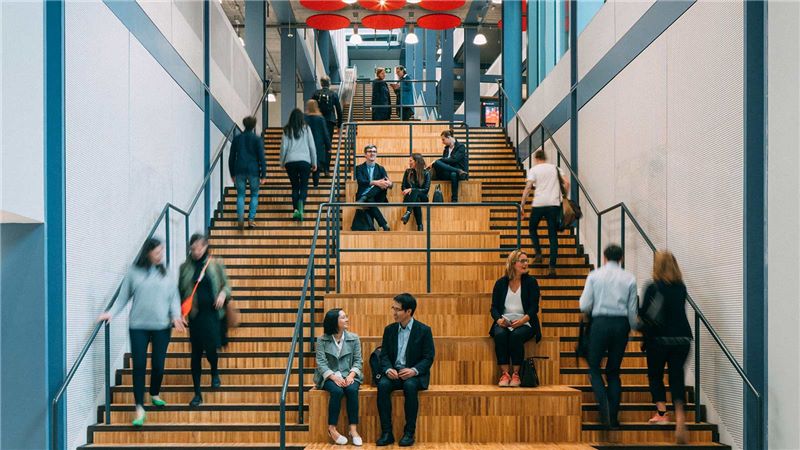Shaping corporate real estate for success
From car showrooms to office skyscrapers, all places of work have been disrupted in one way or another by COVID19. Across the globe, commercial spaces have emptied out temporarily or permanently as a result of Coronavirus. Some retailers have enjoyed the benefit of rapid mobilisation to ecommerce models, but for the vast majority of organisations, strategic foresight is required to plan for the workplace of the future.
In this series, Mace experts explore why a Corporate Real Estate (CRE) strategy is more crucial than ever if businesses want to succeed through the pandemic and beyond.
We begin by exploring the timing of action companies should take in making decisions about their property portfolios and how data can support changes. We then look at the type of experience businesses should be delivering for their employees, including offering mixed portfolios for different ways of working. Finally, we look at why we want people back in the workplace, specifically looking at productivity and collaboration.
Should corporate real estate leaders be making changes to portfolios in a time of uncertainty?
Almost 10 months into the pandemic, the impact of the coronavirus crisis on corporate real estate is hardly front-page news. Office spaces around the world have been standing empty for most of 2020 and corporate real estate occupiers have reached a tipping point. The future of the workplace is undergoing an inevitable transformation, which presents an intimidating challenge for an industry that traditionally responds with reluctance to uncertainty. In this article, Shelley Frost, Mace Director for Strategic Advisory, discusses that in a time of uncertainty, a data-led approach is more vital than ever.
The ripple effects of COVID-19 are changing the landscape in the corporate real estate sphere, and the option ‘to wait and see what happens with the next wave’ before making decisions about the workplace is no longer an option for many businesses. There’s a financial urgency attached to the issue that cannot be ignored.
But in the absence of a crystal ball, how can executives plan? The answer to this question lies in intelligent, data-driven decision-making. Faced with the mercurial nature of an unprecedented global pandemic, there is certainty in understanding what employees want.
A data-driven approach
Over the last six months, many companies have used employee surveys to get an indication of preferred ways of working. Employees have expressed preferences to work from home for a greater portion of their time and leave workplace attendance for collaborative efforts. Although useful, the surveys provide an incomplete picture. The importance of a data-driven approach via observational research, reveals people’s actions, behaviours and work patterns in real world settings. An in-depth understanding of the key data can then be used to inform a successful portfolio strategy. The timing of this data gathering will depend on restrictions in place.
It will be crucial for executives to outlay a small amount of capital investment for trialling physical pilots in buildings across several locations. Data can be obtained from smart technology such as employee security badges, car park entry flow and meeting room bookings. Digital imaging can be used to capture footfall and heatmaps to understand movement. Rather than solely relying on surveys, observational data gathered from physical changes to the workspace will reveal patterns around behaviour, productivity levels, attendance, and how people work and thrive.
It is notoriously difficult for humans to describe how they work and to accurately answer questions based on the sentiment of the moment. Observational data could prove vital for improving business operations. A positive shift in attitude can impact a host of factors, such as productivity, collaboration, engagement, and morale.
Furthermore, this type of real data may indicate the need to redesign a currently occupied workplace or to consider greater occupation of new or existing locations to reduce commuting pressures and anxiety over COVID risks. Needs will vary across a global real estate portfolio but with observational data at hand, highly targeted decisions can be made about any changes to the portfolio.
The fact remains that this is an invaluable approach to gathering intelligence about the workforce and implementing when the time is right.
Thinking outside the box
Corporate real estate has a key part to play in shaping workplace experiences. Designing spaces based on data intelligence will not only offer bespoke solutions for employees, it will help to optimise portfolios according to business needs.
In the rapid response to the crisis, the mass move to remote working ran smoothly for many organisations. However, with global cities facing varying degrees of on-going lockdowns, offices are operating at low occupancy with some sites closed altogether. Pre-pandemic views on the success of remote working have not always been shared – productivity was linked to presenteeism. The forced experiment proved far more successful than thought, but there now seems to be an uptake of a hybrid model of on site and remote working.
So, how can businesses provide a portfolio of workplace environments for their employees in this ever-changing world and ensure that their productivity and well-being are considered?
Flexibility will be key to moving forward and creating inspiring and engaging workspaces. Observational data and analysis will shed light on how different locations are used and inform the new operational strategy. New space in regional hubs, towns and cities will allow companies to rethink the needs and requirements of their people and adapt their portfolios to distribute demand. Buildings cannot remain half empty as employees attend the office only once or twice a week, nor can occupancy be the main basis of decision-making for downsizing.
Instead, they must consider how the workplace can be used to drive business success. Can different locations be used for different purposes? In the future, it will be crucial for real estate to offer a workplace experience where productivity thrives whilst still delivering on health, safety and wellbeing. Again, the unique data available to each organisation will help shape each workplace.
Resilience for the future
With the raft of dilemmas companies currently face, it’s imperative to not underestimate the capacity of the corporate real estate industry to impact change. The domino affects that occupiers and operators have in the workplace, is immense; a risk-averse step-change versus bold strategies built on sophisticated data capture, could be the disruption that CRE has long needed to make its mark in the commercial world and to provide progressive and innovative solutions for the workplace.
Strategies agreed today will need to be constantly revisited and reworked with ever changing external factors but the temptation to ‘just wait and see’ what happens will make it hard for employees to be productive, as uncertainty and knee-jerk reactions are destabilising for businesses.
In an uncertain climate, the focus must be on allowing the opinion and behaviour of employees to be noted and tested in the real world. The findings from observational data, may take months to manifest but will allow companies to balance those investments required to make changes in line with other decisions that make the business successful and resilient for years to come.











